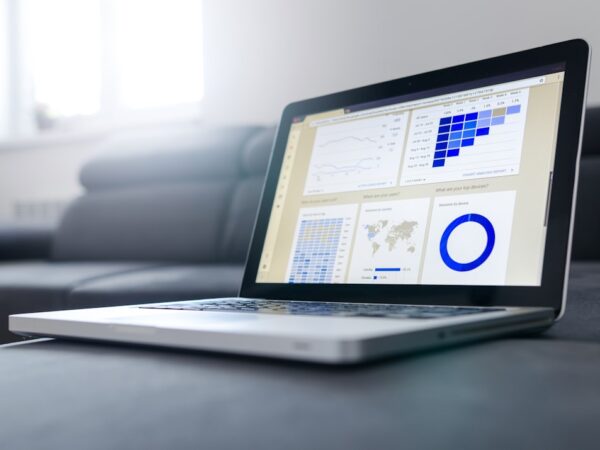
Assessing the Effectiveness of Economic Policies: A Comprehensive Review
Economic policies refer to the actions and decisions taken by governments and central banks to influence the overall performance of the economy. These policies are designed to achieve specific objectives such as promoting economic growth, reducing unemployment, controlling inflation, and maintaining stability in the financial system. Economic policies play a crucial role in shaping the economy as they have a direct impact on individuals, businesses, and the overall economic environment.
The impact of economic policies on individuals is significant. For example, monetary policies implemented by central banks can affect interest rates, which in turn influence borrowing costs for individuals. Lower interest rates can stimulate borrowing and spending, leading to increased economic activity. On the other hand, higher interest rates can discourage borrowing and spending, which can slow down economic growth. Similarly, fiscal policies implemented by governments can impact individuals through changes in taxes and government spending. Tax cuts can increase disposable income for individuals, while increased government spending can create job opportunities.
Businesses are also directly affected by economic policies. For instance, monetary policies can impact the cost of borrowing for businesses, which can affect their investment decisions. Lower interest rates can encourage businesses to invest in new projects and expand their operations. Fiscal policies can also have an impact on businesses through changes in taxes and government spending. Tax incentives for businesses can encourage investment and innovation, while increased government spending on infrastructure projects can create business opportunities.
Key Takeaways
- Economic policies have a significant impact on the overall economic growth and development of a country.
- It is crucial to assess the effectiveness of economic policies to ensure that they are achieving their intended objectives.
- There are various types of economic policies, including monetary, fiscal, international trade, and industrial policies, each with its own objectives.
- Methods for assessing economic policy effectiveness include quantitative analysis, case studies, and surveys.
- Evaluating the effectiveness of monetary and fiscal policies is essential in ensuring macroeconomic stability and sustainable economic growth.
The Importance of Assessing Economic Policy Effectiveness
Assessing the effectiveness of economic policies is crucial for several reasons. Firstly, it helps policymakers understand whether their policies are achieving their intended objectives. By evaluating the impact of economic policies, policymakers can identify areas where adjustments may be needed to improve outcomes. This allows for evidence-based decision-making and ensures that resources are allocated effectively.
Secondly, assessing economic policy effectiveness provides valuable information for stakeholders such as businesses, investors, and individuals. It allows them to make informed decisions based on the expected outcomes of economic policies. For example, businesses can use this information to plan their investments and make strategic decisions. Investors can assess the potential risks and returns of their investments based on the effectiveness of economic policies. Individuals can also make decisions regarding their savings, investments, and consumption patterns based on the expected impact of economic policies.
Thirdly, not assessing economic policy effectiveness can have negative consequences. Without evaluation, policymakers may continue implementing ineffective policies, leading to wasted resources and missed opportunities for economic growth. In addition, businesses and individuals may make decisions based on inaccurate assumptions about the impact of economic policies, which can lead to suboptimal outcomes.
Types of Economic Policies and Their Objectives
There are several types of economic policies, each with its own objectives. These include monetary policies, fiscal policies, international trade policies, industrial policies, and environmental policies.
Monetary policies are implemented by central banks and aim to control the money supply and interest rates in order to achieve macroeconomic objectives such as price stability and economic growth. The main tools used in monetary policy include open market operations, reserve requirements, and changes in the discount rate.
Fiscal policies are implemented by governments and involve changes in taxes and government spending. The objectives of fiscal policies include promoting economic growth, reducing unemployment, and maintaining price stability. Fiscal policy tools include changes in tax rates, government spending on infrastructure projects, and transfer payments.
International trade policies are implemented by governments to regulate trade between countries. The objectives of international trade policies include promoting exports, protecting domestic industries from foreign competition, and ensuring fair trade practices. These policies can include tariffs, quotas, subsidies, and trade agreements.
Industrial policies are implemented by governments to promote the development of specific industries or sectors. The objectives of industrial policies include fostering innovation, creating jobs, and enhancing competitiveness. These policies can include tax incentives for businesses, investment in research and development, and support for small and medium-sized enterprises.
Environmental policies are implemented by governments to address environmental challenges such as climate change, pollution, and resource depletion. The objectives of environmental policies include promoting sustainable development, reducing greenhouse gas emissions, and protecting natural resources. These policies can include regulations, taxes, and incentives to encourage businesses and individuals to adopt environmentally friendly practices.
Methods for Assessing Economic Policy Effectiveness
| Method | Description | Advantages | Disadvantages |
|---|---|---|---|
| Cost-Benefit Analysis | Analyzes the costs and benefits of a policy to determine its effectiveness. | Provides a comprehensive analysis of a policy’s impact on society. | Difficult to quantify all costs and benefits, may not account for intangible factors. |
| Regression Analysis | Examines the relationship between a policy and its outcomes using statistical methods. | Allows for the identification of causal relationships between variables. | May not account for all relevant variables, results may be influenced by outliers. |
| Input-Output Analysis | Examines the interdependence of different sectors of an economy to determine the impact of a policy. | Provides a detailed analysis of the impact of a policy on different sectors of an economy. | May not account for changes in consumer behavior or external factors. |
| Social Accounting Matrix | Examines the impact of a policy on different income groups within an economy. | Provides a detailed analysis of the impact of a policy on different income groups. | May not account for changes in consumer behavior or external factors. |
There are several methods for assessing the effectiveness of economic policies. These methods can be broadly categorized into quantitative methods, qualitative methods, and mixed methods.
Quantitative methods involve the use of statistical analysis to measure the impact of economic policies on various economic indicators. These methods rely on data such as GDP growth rates, inflation rates, unemployment rates, and trade balances. Econometric models are often used to estimate the causal relationship between policy variables and economic outcomes.
Qualitative methods involve the use of case studies, interviews, and surveys to gather information about the impact of economic policies. These methods provide a more in-depth understanding of the context and mechanisms through which policies affect the economy. Qualitative methods can also capture the perspectives and experiences of individuals and businesses affected by economic policies.
Mixed methods involve combining quantitative and qualitative approaches to assess economic policy effectiveness. This allows for a more comprehensive analysis that takes into account both the macroeconomic indicators and the micro-level impacts on individuals and businesses.
Evaluating Monetary Policy Effectiveness
Monetary policy plays a crucial role in shaping the economy by influencing interest rates, money supply, and credit conditions. Central banks are responsible for implementing monetary policy and have various tools at their disposal to achieve their objectives.
One of the main tools used in monetary policy is open market operations, which involve buying or selling government securities in the open market. By buying government securities, central banks increase the money supply in the economy, which can lower interest rates and stimulate borrowing and spending. Conversely, by selling government securities, central banks reduce the money supply, which can raise interest rates and discourage borrowing and spending.
Another tool used in monetary policy is changes in reserve requirements. By increasing reserve requirements, central banks can reduce the amount of money that banks can lend, which can tighten credit conditions and slow down economic activity. Conversely, by decreasing reserve requirements, central banks can increase the amount of money that banks can lend, which can loosen credit conditions and stimulate economic activity.
The effectiveness of monetary policies in achieving their objectives can be assessed through various methods. Quantitative methods can be used to analyze the impact of changes in interest rates and money supply on macroeconomic indicators such as GDP growth rates, inflation rates, and unemployment rates. Qualitative methods can be used to gather information about the experiences and perspectives of individuals and businesses affected by monetary policies. Mixed methods can provide a more comprehensive analysis that takes into account both the macroeconomic indicators and the micro-level impacts.
Assessing Fiscal Policy Effectiveness
Fiscal policy refers to changes in taxes and government spending implemented by governments to influence the overall performance of the economy. Governments have various tools at their disposal to implement fiscal policy, including changes in tax rates, government spending on infrastructure projects, and transfer payments.
One of the main objectives of fiscal policy is to promote economic growth. By reducing taxes, governments can increase disposable income for individuals and businesses, which can stimulate consumption and investment. Increased government spending on infrastructure projects can also create job opportunities and stimulate economic activity.
Another objective of fiscal policy is to reduce unemployment. By increasing government spending on job creation programs or providing subsidies to businesses, governments can create job opportunities and reduce unemployment rates. Conversely, by reducing government spending or increasing taxes, governments can reduce job opportunities and increase unemployment rates.
The effectiveness of fiscal policies in achieving their objectives can be assessed through various methods. Quantitative methods can be used to analyze the impact of changes in taxes and government spending on macroeconomic indicators such as GDP growth rates, unemployment rates, and inflation rates. Qualitative methods can be used to gather information about the experiences and perspectives of individuals and businesses affected by fiscal policies. Mixed methods can provide a more comprehensive analysis that takes into account both the macroeconomic indicators and the micro-level impacts.
The Role of International Trade Policies in Economic Development
International trade plays a crucial role in economic development by promoting specialization, increasing competition, and facilitating the transfer of technology and knowledge. International trade policies are implemented by governments to regulate trade between countries and protect domestic industries from foreign competition.
One of the main objectives of international trade policies is to promote exports. Governments can implement policies such as export subsidies, tax incentives for exporters, and trade agreements to encourage businesses to export their products and services. By promoting exports, governments can increase foreign exchange earnings, create job opportunities, and stimulate economic growth.
Another objective of international trade policies is to protect domestic industries from foreign competition. Governments can implement policies such as tariffs, quotas, and subsidies to protect domestic industries from unfair competition. These policies aim to ensure a level playing field for domestic businesses and prevent the loss of jobs and industries.
The effectiveness of international trade policies in achieving their objectives can be assessed through various methods. Quantitative methods can be used to analyze the impact of trade policies on macroeconomic indicators such as export growth rates, import growth rates, and trade balances. Qualitative methods can be used to gather information about the experiences and perspectives of businesses affected by trade policies. Mixed methods can provide a more comprehensive analysis that takes into account both the macroeconomic indicators and the micro-level impacts.
Assessing the Effectiveness of Industrial Policies
Industrial policies refer to government interventions aimed at promoting the development of specific industries or sectors. These policies are designed to foster innovation, create jobs, enhance competitiveness, and promote economic growth.
Governments can implement various industrial policy tools, including tax incentives for businesses, investment in research and development, support for small and medium-sized enterprises, and infrastructure development. These policies aim to create a favorable business environment, attract investment, and promote the growth of specific industries or sectors.
The effectiveness of industrial policies in achieving their objectives can be assessed through various methods. Quantitative methods can be used to analyze the impact of industrial policies on macroeconomic indicators such as GDP growth rates, employment rates, and productivity levels. Qualitative methods can be used to gather information about the experiences and perspectives of businesses affected by industrial policies. Mixed methods can provide a more comprehensive analysis that takes into account both the macroeconomic indicators and the micro-level impacts.
The Impact of Environmental Policies on Economic Growth
Environmental policies refer to government interventions aimed at addressing environmental challenges such as climate change, pollution, and resource depletion. These policies are designed to promote sustainable development, reduce greenhouse gas emissions, protect natural resources, and enhance the resilience of ecosystems.
Governments can implement various environmental policy tools, including regulations, taxes, subsidies, and incentives. These policies aim to encourage businesses and individuals to adopt environmentally friendly practices, invest in clean technologies, and reduce their environmental footprint.
The impact of environmental policies on economic growth can be complex. On one hand, environmental policies can create new business opportunities and stimulate innovation in clean technologies. For example, the transition to renewable energy sources can create jobs in the renewable energy sector and reduce dependence on fossil fuels. On the other hand, environmental policies can impose costs on businesses and individuals through regulations and taxes. These costs can affect competitiveness and economic growth.
The effectiveness of environmental policies in achieving their objectives can be assessed through various methods. Quantitative methods can be used to analyze the impact of environmental policies on macroeconomic indicators such as GDP growth rates, employment rates, and pollution levels. Qualitative methods can be used to gather information about the experiences and perspectives of businesses and individuals affected by environmental policies. Mixed methods can provide a more comprehensive analysis that takes into account both the macroeconomic indicators and the micro-level impacts.
The Need for Continuous Monitoring and Evaluation of Economic Policies
Continuous monitoring and evaluation of economic policies is crucial for several reasons. Firstly, it allows policymakers to assess whether their policies are achieving their intended objectives. By evaluating the impact of economic policies, policymakers can identify areas where adjustments may be needed to improve outcomes. This ensures that resources are allocated effectively and that policies are evidence-based.
Secondly, continuous monitoring and evaluation of economic policies provide valuable information for stakeholders such as businesses, investors, and individuals. It allows them to make informed decisions based on the expected outcomes of economic policies. For example, businesses can use this information to plan their investments and make strategic decisions. Investors can assess the potential risks and returns of their investments based on the effectiveness of economic policies. Individuals can also make decisions regarding their savings, investments, and consumption patterns based on the expected impact of economic policies.
Thirdly, not continuously monitoring and evaluating economic policies can have negative consequences. Without evaluation, policymakers may continue implementing ineffective policies, leading to wasted resources and missed opportunities for economic growth. In addition, businesses and individuals may make decisions based on inaccurate assumptions about the impact of economic policies, which can lead to suboptimal outcomes.
In conclusion, economic policies play a crucial role in shaping the economy and have a direct impact on individuals, businesses, and the overall economic environment. Assessing the effectiveness of economic policies is important to ensure that resources are allocated effectively, stakeholders can make informed decisions, and negative consequences are avoided. There are various methods for assessing economic policy effectiveness, including quantitative methods, qualitative methods, and mixed methods. Continuous monitoring and evaluation of economic policies are necessary to ensure that they are achieving their intended objectives and to inform evidence-based decision-making.
If you’re interested in delving deeper into economic policy review, you might find this article on Wave Magnets quite intriguing. Titled “The Impact of Fiscal Policies on Economic Growth,” it offers a comprehensive analysis of how government spending and taxation can influence a country’s economic performance. This thought-provoking piece provides valuable insights and explores the potential consequences of different fiscal policies. To read more about it, click here.
FAQs
What is an economic policy review?
An economic policy review is an assessment of the effectiveness of a government’s economic policies in achieving their intended goals.
Why is an economic policy review important?
An economic policy review is important because it helps to identify areas where a government’s economic policies may be falling short and provides recommendations for improvement.
Who conducts an economic policy review?
An economic policy review is typically conducted by a team of economists and policy analysts, often within a government agency or think tank.
What are some common areas of focus in an economic policy review?
Common areas of focus in an economic policy review include fiscal policy, monetary policy, trade policy, and regulatory policy.
What are some potential outcomes of an economic policy review?
Potential outcomes of an economic policy review include changes to existing policies, the introduction of new policies, and recommendations for further research or analysis.
How often are economic policy reviews conducted?
The frequency of economic policy reviews varies depending on the government and the specific policies being reviewed. Some governments conduct reviews on a regular basis, while others may only conduct reviews in response to specific economic challenges or crises.


















